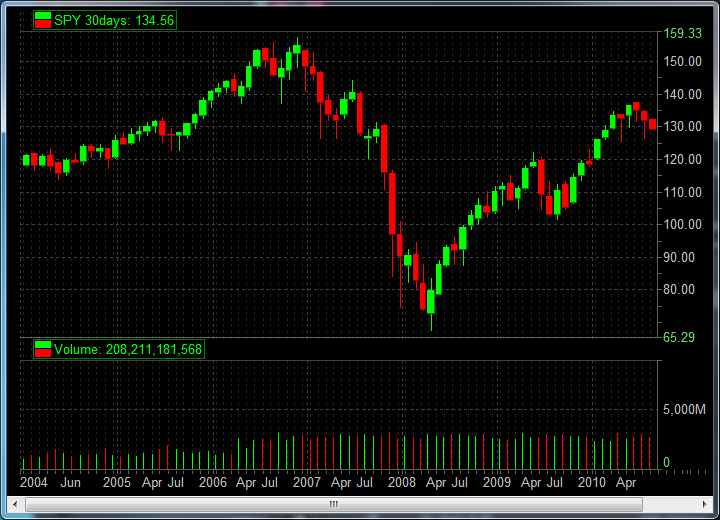The market has changed a lot in the past few years. When Mike and I started SMB the market was in the early stages of an 18-month uptrend that led to an incredible momentum based trading market late ’07 and ’08. The most important skill by far during that time was being able to read the tape. You had to be able to get in and get out as quickly as possible. There were certainly already thousands of little HFTs running rampant in the marketplace but with the high volatility in the market discretionary traders were able to adapt more quickly than the computer programs. In fact, when the first selling wave took place in August 2007 for a time we saw many HFTs turned off and we were able to take advantage of wider spreads with our trading skills.
important skill by far during that time was being able to read the tape. You had to be able to get in and get out as quickly as possible. There were certainly already thousands of little HFTs running rampant in the marketplace but with the high volatility in the market discretionary traders were able to adapt more quickly than the computer programs. In fact, when the first selling wave took place in August 2007 for a time we saw many HFTs turned off and we were able to take advantage of wider spreads with our trading skills.
Then the market bottomed in March 2009 and began a very slow steady climb with shallow pullbacks for the next year. Most young traders were confounded by this price action as all they had known was momentum trading (extremely very low time frames, not the momentum trading I have often referred on in the blog of the momo hedge funds) which involved hitting the bid, paying the offer, getting in, getting out, and moving on to the next trade. But the market was starting to require young traders to focus on higher time frames and to use pullbacks to establish long positions and longer holding periods. In October of 2009, I began in earnest what we termed “SMB’s Trades Of The Week”. We wanted our traders to focus more on the big picture trend and less on the minute to minute. We wanted traders to think about intraday swing trades, which led Bella to eventually coining the phrase the “Trend Trend Trade” and spending more time talking about Trades2Hold.
In intraday trading a Trend Trend Trade (“TTT”) is an intraday swing trade, which may lead to an overnight position depending on general market conditions and the price action of the stock by the market’s close. In a lower volatility uptrending environment we are more likely as traders to take overnight positions as we tend to see better multi-day follow through without significant gap risk.
So our Trades of the Week provided a review of the best technical and/or News Plays from the prior week. We would always review stocks that had been discussed in our AM Meeting in an attempt to avoid “hindsight bias” as much as possible. We didn’t want traders to feel like the trades being reviewed were identified “after the fact” so that it would have been extremely difficult for them to execute the ideas as they had occurred in real time.
A few of the points of emphasis in our review were identifying the best prices to enter trades such that the risk/reward was greater than 1:5, trades that offered multiple points of upside, and using the lower time frames to better time entries and exits but looking at higher time frames to stick with the trend.
When talking about higher time frame it is very important to define what we mean in the sphere of intraday trading. We are talking about five-minute trends or higher. I have settled on the 15 minute as the best trend for me intraday in the past couple of years. I will use the five-minute chart to identify the best consolidations for trade entry and may drill down even lower for precise entries.
The continuous “pounding of the table” with respect to following the trend and using the higher time frame has had a strong impact on our desk in the last 2+ years as younger traders are much less likely to fade stocks than when we began SMB. It is easier for guys to work together when they have a common underlying trading philosophy. Overall, it is good for harmony on the desk.
So without further ado let’s talk about trading with the Higher Time Frame trend intraday. Click here for the Webinar.
Steven Spencer is the co-founder of SMB Capital and SMB Training and has traded professionally for over 15 years. His email is [email protected].
No relevant positions


